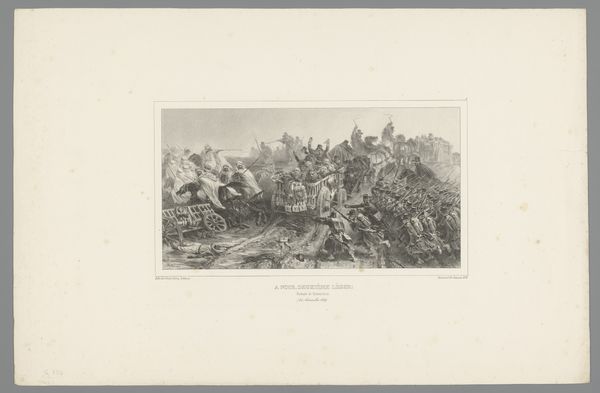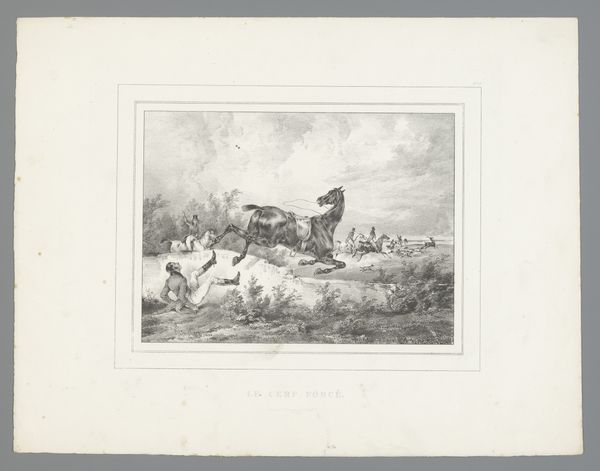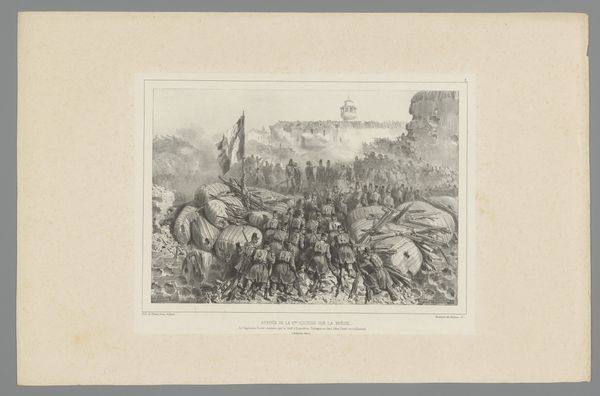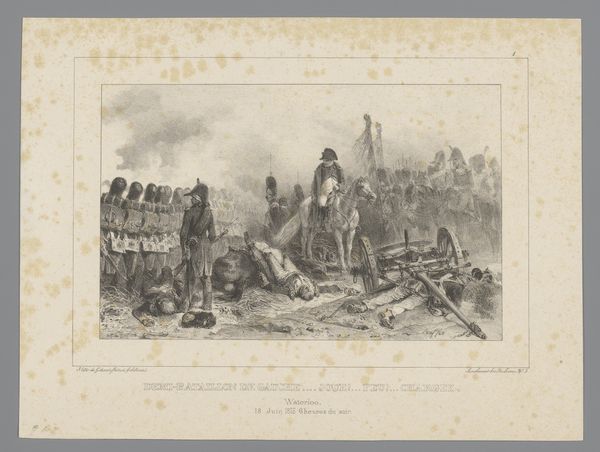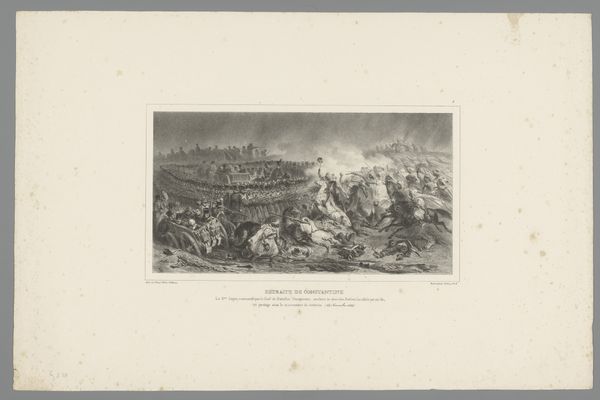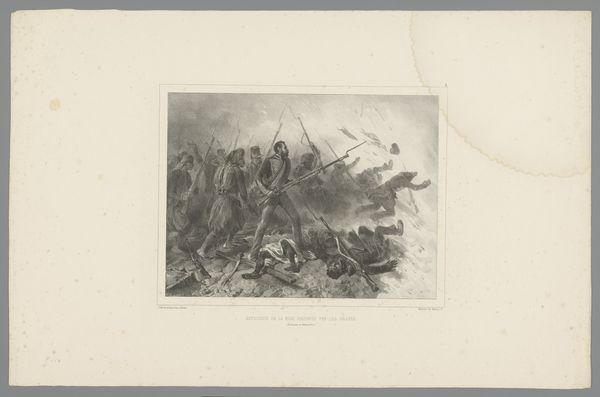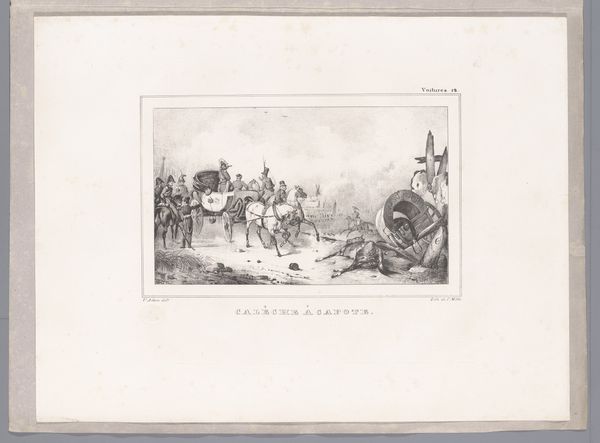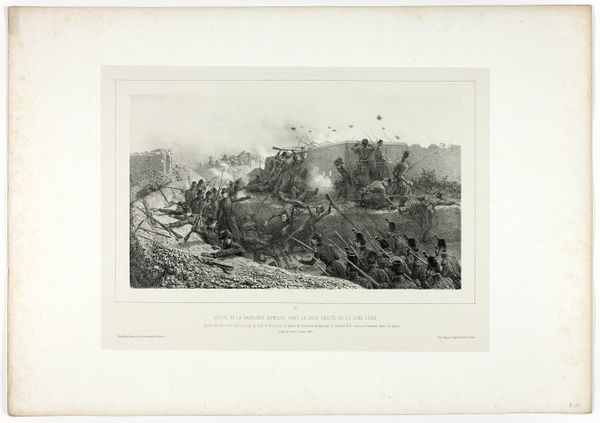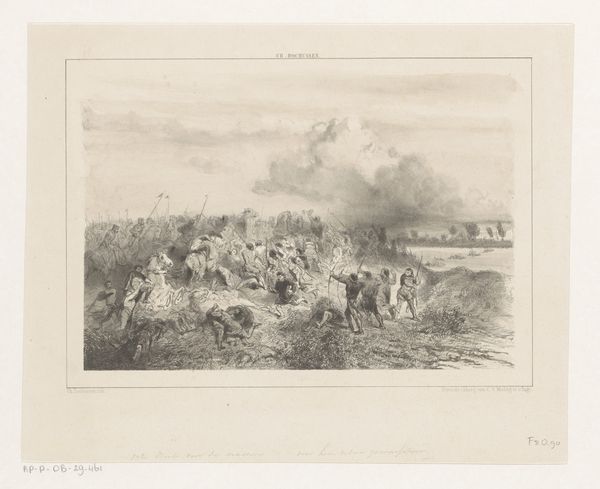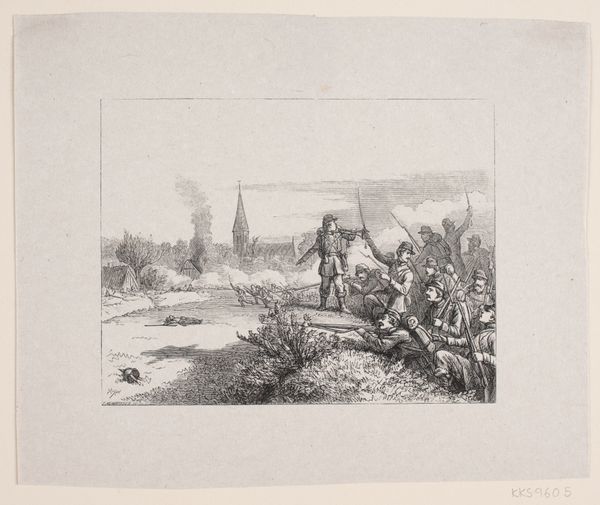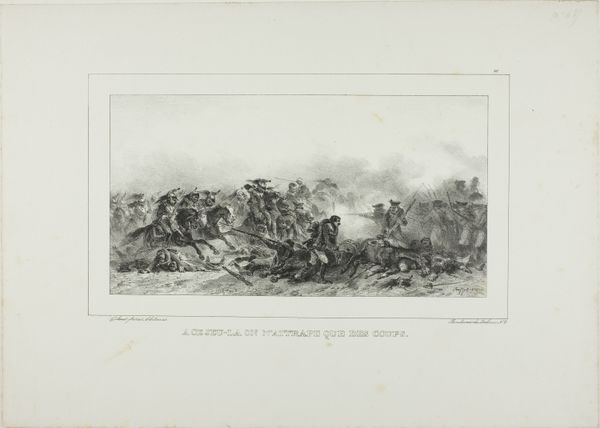
Franse soldaten klaar voor een verrassingsaanval op de Arabieren 1837
0:00
0:00
augusteraffet
Rijksmuseum
print, engraving
#
narrative-art
# print
#
figuration
#
romanticism
#
line
#
history-painting
#
engraving
Dimensions: height 358 mm, width 546 mm
Copyright: Rijks Museum: Open Domain
Curator: Today, we're looking at "French Soldiers Preparing a Surprise Attack on the Arabs," an 1837 engraving by Auguste Raffet, housed here at the Rijksmuseum. Editor: The title itself feels…fraught. My initial impression is of an image steeped in the visual language of colonialism: stillness before violence. You sense the tension in the air through the almost monochrome palette. Curator: Indeed. Raffet masterfully uses line and tonal variation to build a composition that invites detailed study. Consider how he distributes the mass of soldiers, balancing them across the horizontal axis. The linear structure defines space, moving your gaze strategically. Editor: Absolutely. And while Raffet gives weight to the soldiers through line work and perspective, what are the power dynamics inscribed in the visual representation of this scene? The engraving immortalizes not merely a military encounter, but the mindset of the colonizer on the brink of invading land and people. It romanticizes the moment before the surge. Curator: Yet, we mustn't reduce this artwork purely to political allegory. Analyze the dynamism of form; the diagonal placement of abandoned rifles draws your eye immediately into the frame, offset against the massed regiment positioned at right. We can observe how Raffet uses light to heighten the impending moment of impact, which contributes to the aesthetic interest of the print. Editor: The artistic intention is surely noteworthy. The composition and technique create that moment of charged intensity— but at what cost? It can romanticize imperialistic actions, inviting us to sympathize solely with the aggressors. Shouldn't we ask ourselves whom these engravings served in their historical moment, what stories they helped propagate, and, maybe, critique? Curator: Perhaps, yet I contend this detailed analysis doesn't reduce it. Recognizing this detail provides keys to understanding this era’s style and approach in the representation of space. Understanding how meaning is visually coded. Editor: That’s a perspective that emphasizes what these images signified then versus how they're still charged now. Perhaps both perspectives matter when considering a fraught and loaded artwork like this.
Comments
No comments
Be the first to comment and join the conversation on the ultimate creative platform.
